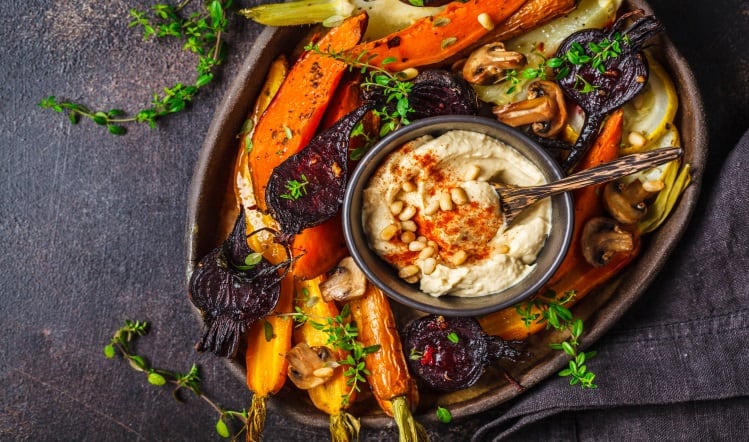Much lower amounts are present in meat and milk and these fatty acids are absent from plants. Yet they are important components of human cell membranes, for example the retina and cerebral cortex in the case of DHA, and are needed for normal development and cell function.
Although EPA and DHA can be made in the body from the essential omega 3 fatty acid alpha-linolenic acid present in a number of seeds, seed oils and nuts (for example, rapeseed oil and walnuts), our capacity to do this is very limited and appears to decline with age, so we are largely reliant on obtaining EPA and DHA pre-formed from the diet.
A daily intake of 450mg EPA and DHA combined is recommended in the UK, achievable via a 140g serving of oily fish each week. However, only about a quarter of UK adults regularly consume oily fish, average intakes are low and intake in children is even less common. Low intakes may be linked to perceived unpalatability of oily fish, lack of relevant cooking skills or associated cooking smells.
Alternative sources of EPA and DHA
A review in Nutrition Bulletin from researchers at Southampton University and Rothamsted Research, explores the options for an alternative source of EPA and DHA that can be upscaled and is sustainable. It discusses how the challenges associated with ensuring a sufficient supply might be overcome by seed oils from transgenic plants engineered to produce EPA and DHA.
It has been estimated that marine sources can currently supply just 16% of the EPA and DHA needed to ensure that everyone on the planet achieves the recommended daily intake. Wild fish capture has remained static since the 1990s but farmed fish consumption has increased substantially. However, fish also rely on a dietary supply of omega 3 fatty acids and so rearing of farmed fish represents a major demand on world fish oil supply.
Krill oil has been proposed as an alternative source of EPA plus DHA but concerns exist about the impact on marine food webs in the South Atlantic.
Algal oils currently account for 2% of human EPA/DHA consumption but fermentation and processing costs are currently substantially greater than for fish oil production.
Vegetable oils from genetically modified plants
Vegetable oils derived from genetically modified plants are another alternative source of EPA and DHA and may overcome concerns about palatability, sustainability and contamination that are associated with fish oil, and the issues associated with algal oils and krill oil. Genetic insertion of desaturase and elongase enzymes from yeast and algae into plants that naturally produce alpha-linoleic acid has enabled the development of strains of canola (oilseed rape) and Camelina sativa (C. sativa) able to synthesise EPA and DHA.
Trials in healthy men and women have now shown that incorporation and accumulation of EPA and DHA in plasma lipids after dietary supplementation with oil from transgenic C. sativa is as good as that achieved with fish oil, and the C. sativa oil was well tolerated.
Field trials have already demonstrated the stability and robustness of the transgenic trait of C. sativa, but current legislation in Europe remains a barrier to the commercial cultivation of transgenic plants for human consumption. The authors speculate that new opportunities may emerge now the UK has left the EU.
Judy Buttriss is director general of the British Nutrition Foundation




